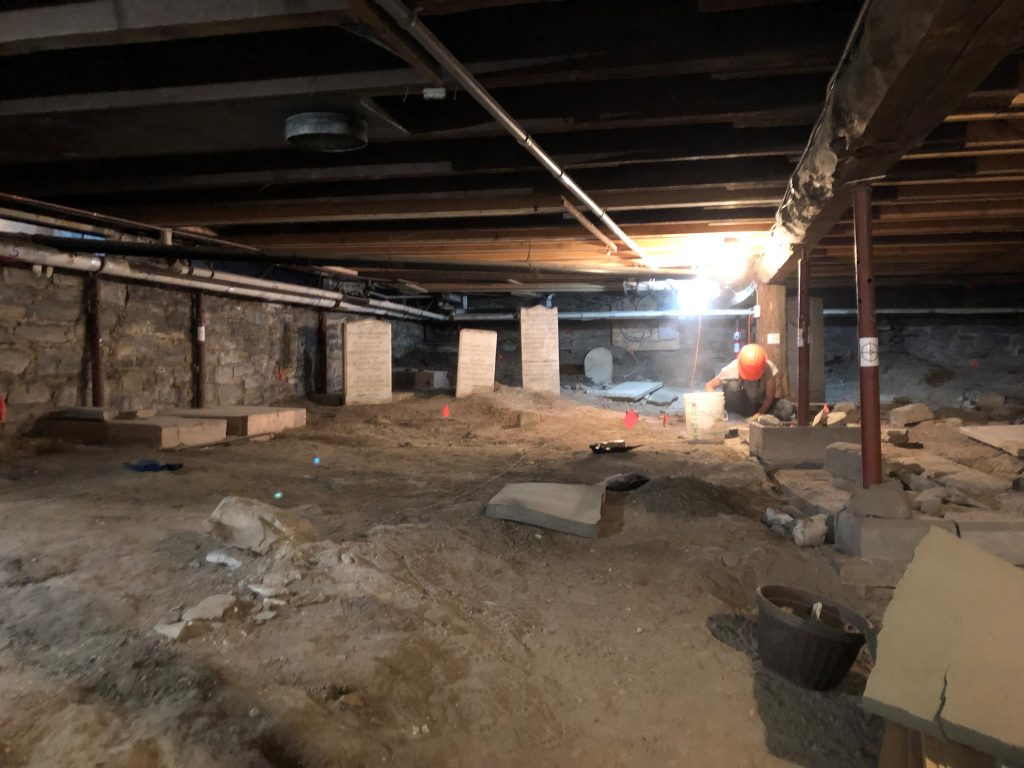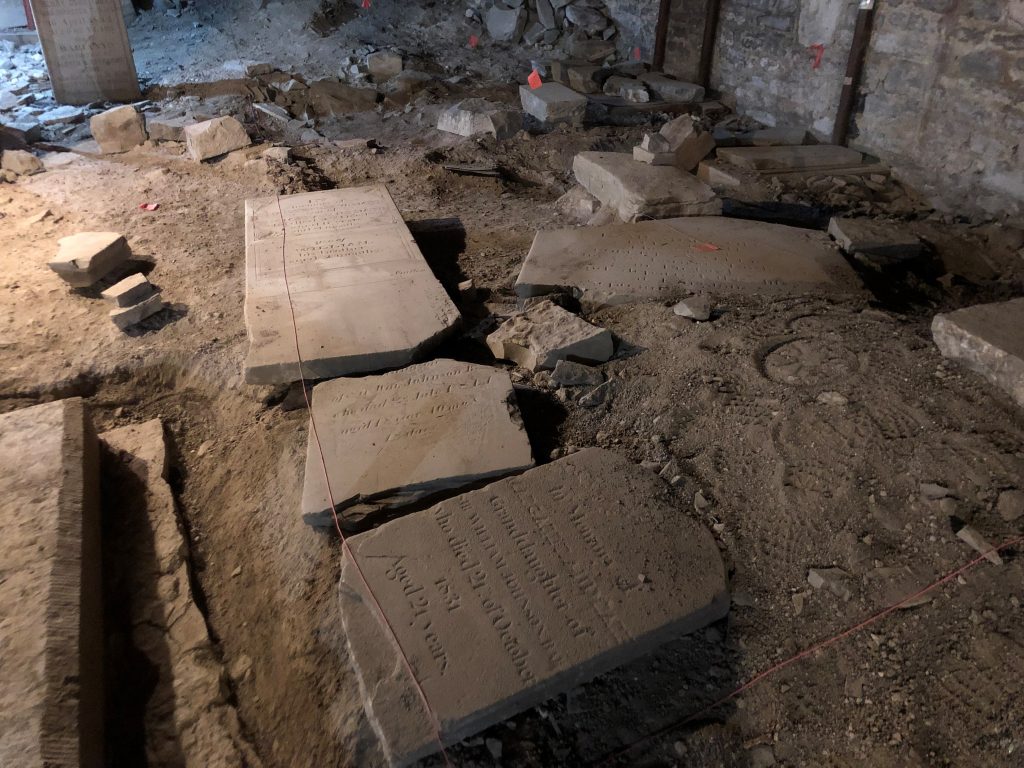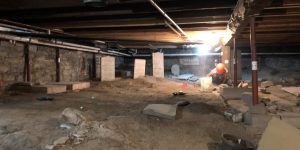From June to August 2019, I volunteered a few days a month on stage one of the “Cultural Resource Recording Project: Under the St. Paul’s Church Hall, Lower Burial Ground in Kingston.” The project site is part of Lower Burial Ground, one of the oldest consecrated cemeteries in Ontario that was established in 1783. The church hall was constructed on top of part of the cemetery in the 1870s. Over the many decades since, the small area underneath of it was filled with trash (like wood, straw, installation, cigarette butts) and graves markers moved from the rest of the cemetery grounds outdoors. The project, sponsored by the Lower Burial Ground Restoration Society, is ongoing and led by project coordinator and Queen’s University PhD Candidate (Geography and Planning), Sue Bazely. Queen’s students and faculty, along with Kingston community member volunteers, like myself, are assisting Bazely with the project.
The project does not involve excavating, but rather cleaning. The goal of the project is to make the hidden (and often unknown) space virtually accessible to the public and bring back dignity to the grave markers that were desecrated over past one hundred plus years.


My role in the project phase as a site volunteer is to help with the cleaning, transporting, and recording. Cleaning and transporting involved sweeping debris from the space and then sifting through the debris in search for any human (and animal) remains or objects, such as china, bible pages, etc.—anything that can help reconstruct what happened in the past, as well as what remains hidden in the space. This also involved uncovering and sweeping debris off grave markers. As a recorder, I assisted with recording and identifying found objects and helping with trying to match inscriptions on uncovered grave markers with a previous 1937 inventory.
This was my first time working on an archaeological project. I learned about this project through my co-op work term at the Murney Tower Museum National Historic Site of Canada. I decided to volunteer not only because I saw it as an opportunity to expand my skill set, but mostly because I was also intrigued by this concealed bit of Lower Burial Ground history. As someone who grew up in the Kingston area, I knew about Lower Burial Ground and aspects of its history. However, even as someone who had previous work experience and interest in the heritage sector of Kingston, I was unaware of this small space under the church hall.
For more information on the project you can read media coverage by Global News, the Kingston Whig-Standard, and the Queen's Gazette.
